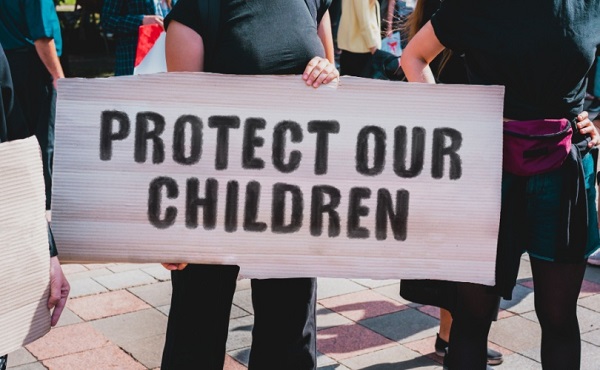Opinion
Singh’s victory heralds the end of the baby boomer’s reign in Canadian Politics

Baby boomers are the demographic cohort following the Silent Generation. There are no precise dates for when this cohort starts or ends; demographers and researchers typically use starting birth years ranging from the early-to-mid 1940s and ending birth years ranging from 1960 to 1964. Today that would be anyone from the age of 53 to the age of 77.
The Federal NDP announced their new leader this weekend, Jagmeet Singh age 38. Chantal Hebert wrote;” Singh’s victory heralds the end of the baby boomer’s reign in Canada.” She is correct.
Prime Minister Justin Trudeau is 45 years of age. In Opposition we have Conservative Andrew Scheer age 38 and NDP Leader Jagmeet Singh aged 38.
Let us look closer to home, at Alberta politics. Premier Rachel Notley is 53 and could be the youngest baby boomer or the first of the next generation, Generation X. Brian Jean at age 54 is in the same boat, the younger of the baby boomers or the older Generation X. Then you have definite, Generation X alumni Jason Kenney, age 49 retiring from federal politics to try his hand at provincial politics, and Alberta Liberal Party leader David Khan aged 43.
Municipally in Red Deer we have a Mayor, Tara Veer a definite Generation Xer at 39 this year, or 35 upon first being elected Mayor.
As a confirmed Baby Boomer I enjoyed the benefits of being part of such an influential group, but it is time to pass the torch to the next generation. I hope people our age can still be of assistance, offering advice, sharing experiences but I hope we can accept that the next generation is fully capable accepting the reigns of power in Canadian politics. Don’t you?
Alberta
Carney forces Alberta to pay a steep price for the West Coast Pipeline MOU

From the Fraser Institute
The stiffer carbon tax will make Alberta’s oil sector more expensive and thus less competitive at a time when many analysts expect a surge in oil production. The costs of mandated carbon capture will similarly increase costs in the oilsands and make the province less cost competitive.
As we enter the final days of 2025, a “deal” has been struck between Carney government and the Alberta government over the province’s ability to produce and interprovincially transport its massive oil reserves (the world’s 4th-largest). The agreement is a step forward and likely a net positive for Alberta and its citizens. However, it’s not a second- or even third-best option, but rather a fourth-best option.
The agreement is deeply rooted in the development of a particular technology—the Pathways carbon capture, utilization and storage (CCUS) project, in exchange for relief from the counterproductive regulations and rules put in place by the Trudeau government. That relief, however, is attached to a requirement that Alberta commit to significant spending and support for Ottawa’s activist industrial policies. Also, on the critical issue of a new pipeline from Alberta to British Columbia’s coast, there are commitments but nothing approaching a guarantee.
Specifically, the agreement—or Memorandum of Understanding (MOU)—between the two parties gives Alberta exemptions from certain federal environmental laws and offers the prospect of a potential pathway to a new oil pipeline to the B.C. coast. The federal cap on greenhouse gas (GHG) emissions from the oil and gas sector will not be instituted; Alberta will be exempt from the federal “Clean Electricity Regulations”; a path to a million-barrel-per day pipeline to the BC coast for export to Asia will be facilitated and established as a priority of both governments, and the B.C. tanker ban may be adjusted to allow for limited oil transportation. Alberta’s energy sector will also likely gain some relief from the “greenwashing” speech controls emplaced by the Trudeau government.
In exchange, Alberta has agreed to implement a stricter (higher) industrial carbon-pricing regime; contribute to new infrastructure for electricity transmission to both B.C. and Saskatchewan; support through tax measures the building of a massive “sovereign” data centre; significantly increase collaboration and profit-sharing with Alberta’s Indigenous peoples; and support the massive multibillion-dollar Pathways project. Underpinning the entire MOU is an explicit agreement by Alberta with the federal government’s “net-zero 2050” GHG emissions agenda.
The MOU is probably good for Alberta and Canada’s oil industry. However, Alberta’s oil sector will be required to go to significantly greater—and much more expensive—lengths than it has in the past to meet the MOU’s conditions so Ottawa supports a west coast pipeline.
The stiffer carbon tax will make Alberta’s oil sector more expensive and thus less competitive at a time when many analysts expect a surge in oil production. The costs of mandated carbon capture will similarly increase costs in the oilsands and make the province less cost competitive. There’s additional complexity with respect to carbon capture since it’s very feasibility at the scale and time-frame stipulated in the MOU is questionable, as the historical experience with carbon capture, utilization and storage for storing GHG gases sustainably has not been promising.
These additional costs and requirements are why the agreement is the not the best possible solution. The ideal would have been for the federal government to genuinely review existing laws and regulations on a cost-benefit basis to help achieve its goal to become an “energy superpower.” If that had been done, the government would have eliminated a host of Trudeau-era regulations and laws, or at least massively overhauled them.
Instead, the Carney government, and now with the Alberta government, has chosen workarounds and special exemptions to the laws and regulations that still apply to everyone else.
Again, it’s very likely the MOU will benefit Alberta and the rest of the country economically. It’s no panacea, however, and will leave Alberta’s oil sector (and Alberta energy consumers) on the hook to pay more for the right to move its export products across Canada to reach other non-U.S. markets. It also forces Alberta to align itself with Ottawa’s activist industrial policy—picking winning and losing technologies in the oil-production marketplace, and cementing them in place for decades. A very mixed bag indeed.
Energy
Will the New West Coast Pipeline MoU Lead to Results? Almost Certainly Not According to AI

Here’s what I asked my AI friend:
I’ve attached the recently-released Canada-Alberta Memorandum of Understanding. In the context of known opposition from the BC government, environmental activists, and first nations groups – and the general difficulties involved in completing any large infrastructure projects in Canada – how likely is it that the MoU will lead to any completions at all, and, if there are completions, that they’ll finish within a decade?
In case you’re curious, here’s the response I received:
Short answer up front — given the text of the Memorandum of Understanding you uploaded and the immediate political and legal context, the odds that the MOU as-written actually produces all its headline “big infrastructure” completions within a decade (i.e., by ~2035) are low. My best-effort, bottom-line probabilities (with reasoning and key milestones to watch) are below.
Quick probabilities (subjective estimates)
- A Pacific-coast bitumen pipeline (built and operating by 2035): ~20–35%.
- Pathways / large-scale CCUS Phase 1 elements in operation by 2035: ~35–55% (some staged components more likely than full buildout).
- Large transmission interties / major new nuclear for Alberta in service by 2035: ~15–35% (varies by type — some interties easier, new nuclear much harder).
- Large AI data-centre buildout in Alberta within a decade: ~40–60% (market demand + provincial incentives make this comparatively easier).
These numbers are probabilistic judgements, not precise forecasts; I explain the drivers, evidence and what would raise/lower the odds.
Why I give those probabilities — the key factors
1) The MOU is politically ambitious but conditional and mutually dependent
The MOU explicitly ties the pipeline and Pathways CCUS together — each is described as a prerequisite for the other, and many deliverables hinge on future agreements and a proponent submitting an application (the MOU says a pipeline application should be ready by July 1, 2026). That circular dependency increases programmatic risk: if one falters, the other can be held up. (MOU text).
2) Strong, immediate opposition from B.C. provincial government and coastal First Nations
B.C.’s government and many coastal First Nations organizations have publicly rejected the concept of a tanker corridor and a new heavy-oil pipeline to the north coast. Those political and Indigenous objections are front-page headlines in the immediate aftermath of the MOU and will translate into court actions, regulatory fights, and sustained public campaigns. Those actors can and historically have delayed or stopped projects (see Trans Mountain & Northern Gateway precedents discussed in coverage).
3) Federal legal / regulatory mechanics are necessary but not sufficient
The MOU contemplates designating the pipeline under the Building Canada Act and potentially adjusting the Oil Tanker Moratorium Act, and it commits to streamlining approval timelines (target: approvals within two years). Those federal moves can shorten some federal timelines, but they do not erase constitutional duties to consult and accommodate Indigenous rights, nor do they prevent provincial rights/objections or judicial review. The Prime Minister’s office release makes the federal commitments explicit — but it also acknowledges the need for Indigenous and B.C. agreement.
4) Proponent, financing and market risk
The MOU relies on private sector proponents and large capital. Media coverage and industry commentary note that no firm proponent was publicly committed at signing, and the economics depend on long-term export markets for heavy oil and investor appetite for projects that require legal and political risk to be resolved — all of which raises the hurdle for a credible, financed project in short order.
5) Pathways CCUS is both a risk and an enabler
Pathways (the oil-sands CCUS alliance) is already a real industry consortium with technical plans and public materials; advancing its network could materially reduce political resistance by promising lower emission intensity. But Pathways itself is a very large, multi-party build that has faced skepticism about scale, timing and effectiveness. If Phase-1 CCUS components can be credibly built and operating within the next several years, it materially increases the political case for export infrastructure. The Pathways project pages show the planned CO₂ transport and storage infrastructure but also underline the scale and staging of the work.
How the main obstacles translate into timing risk
- Indigenous consent and litigation — Even with federal designation, opponents can seek judicial review; coastal Nations have stated they will use “every tool” to block tankers. Court processes, injunctions, and enforceable consultation obligations typically add several years. (This is a primary reason the pipeline completion probability is low.)
- B.C. provincial resistance — B.C. can use permitting, provincial laws, and political pressure; even if federal adjustments reduce regulatory friction, provincial opposition creates practical and reputational tolls that slow financing and construction.
- Financing and market risk — Global capital markets and corporate boards are sensitive to long legal/regulatory tails and climate reputational risk; that makes large oil export pipelines harder to secure finance for quickly absent strong de-risking measures (e.g., government guarantees/loan backstops, which the MOU references as possible).
- Technical & supply-chain scale for Pathways — CCUS networks are feasible technically, and industry has plans, but building a massive CO₂ pipeline, capture equipment at multiple facilities, and permanent storage facilities takes years to plan and permit. The MOU and government materials set staged timelines (Phase 1 staged 2027–2040), which implies only partial Phase-1 completion by 2035 in the plan itself.
What’s plausibly achievable by ~2035 (the 10-year horizon)
- Some Pathways components (capture at specific sites and portions of CO₂ pipeline/storage) — plausible
Because Pathways is industry-led and already exists as an alliance, it is the single most likely big-project deliverable to reach at least partial operation before 2035. Staged delivery is explicit in the plan and some member companies have capacity and balance sheets to advance work. Probability: ~35–55%. Pathways Alliance+1 - A fully built, tanker-enabled Pacific export pipeline with coast loading and steady throughput by 2035 — unlikely without major concessions
Given provincial and Indigenous opposition, the lack of a named proponent at signing, and the need to change or exempt parts of the tanker moratorium, a fully operational coast-loading pipeline by 2035 is low probability unless there are rapid breakthroughs in Indigenous co-ownership deals, provincial buy-in or unusually strong federal guarantees. Probability: ~20–35%. AP News+1 - Large transmission interties and some AI data-centre growth — moderately likely
These projects are politically less fraught (compared to a tanker corridor) and can be pursued with provincial cooperation and market incentives; Alberta’s pledge to incentivize data centres and interties makes early wins here more plausible. Probability: ~40–60% (data centres), ~25–45% (major interties completed by 2035). - New nuclear generation on Alberta grid by 2035 — improbable to aggressive
Building competitive new nuclear (small modular reactors or larger) and connecting them in that timeframe is a stretch: licensing, sites, supply chain and cost are major hurdles. The MOU targets a nuclear strategy by Jan 1, 2027, but a full buildout by 2035 is ambitious. Probability: ~15–25%.
What would materially increase the odds (what to watch for)
If you want to update these probabilities later, watch for these high-leverage events:
- A named, deep-pocketed commercial proponent (Enbridge, TC Energy, a consortium) with a signed off-take/financing plan — immediate boost to pipeline odds.
- Concrete Indigenous co-ownership agreements with key coastal Nations — this would be the single biggest political de-risking step.
- A federal statutory amendment or explicit legal mechanism that resolves the tanker moratorium for a specific corridor, with B.C. accommodation negotiated — would reduce the B.C. veto risk.
- Binding financing commitments or public loan guarantees (federal or provincial) for Pathways and/or the pipeline.
- Courts rejecting key legal challenges early or conversely, successful injunctions that create long delays.
(Each of the above items would merit re-rating the probabilities substantially.)
Practical conclusion for someone deciding whether to count on these projects finishing in a decade
- Do not assume the MOU equals turnkey delivery. The MOU establishes intent, sets targets and commits to streamlining — but it leaves the hardest things (consent, a proponent, money, and provincial buy-in) unresolved.
- Expect staged, partial wins (some Pathways elements, more data centres, maybe one or two transmission projects) rather than a single dramatic coast pipeline and immediate tanker-enabled export corridor.
-

 Business1 day ago
Business1 day agoBlacked-Out Democracy: The Stellantis Deal Ottawa Won’t Show Its Own MPs
-

 Alberta2 days ago
Alberta2 days agoPremier Danielle Smith says attacks on Alberta’s pro-family laws ‘show we’ve succeeded in a lot of ways’
-

 Agriculture1 day ago
Agriculture1 day agoHealth Canada pauses plan to sell unlabeled cloned meat
-

 Alberta2 days ago
Alberta2 days agoNew pipeline from Alberta would benefit all Canadians—despite claims from B.C. premier
-

 Artificial Intelligence2 days ago
Artificial Intelligence2 days agoGoogle denies scanning users’ email and attachments with its AI software
-

 COVID-192 days ago
COVID-192 days agoCrown seeks to punish peaceful protestor Chris Barber by confiscating his family work truck “Big Red”
-

 Crime1 day ago
Crime1 day agoB.C.’s First Money-Laundering Sentence in a Decade Exposes Gaps in Global Hub for Chinese Drug Cash
-

 International1 day ago
International1 day agoAmerica first at the national parks: Trump hits Canadians and other foreign visitors with $100 fee








